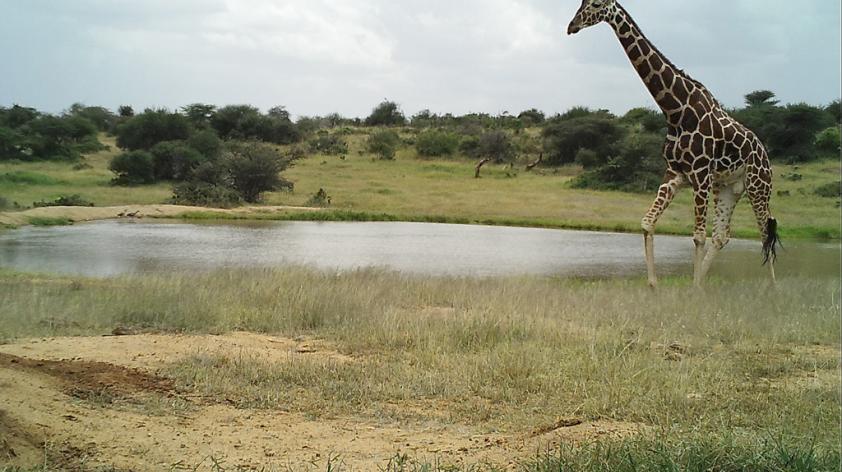
These images are 1 in a million!
Since June 2017, people from all over the world have been heading on a virtual safari to northern Kenya to help study and conserve reticulated giraffe. Over 15,000 volunteers have logged onto Wildwatch Kenya.org (WWK) to help us classify images from motion activated trail cameras and they recently hit an incredible milestone! In just under 2 years these "Wildwatchers" have classified over one million images.
These classifications are a vital step towards helping our research team understand the giraffe populations at our two study sites in northern Kenya.
So far, over 4,000 images of giraffe have been classified with 175 of those images containing calves! These data, which help us identify the locations where giraffe are occurring, have already contributed to updating the range maps of reticulated giraffe. These new range maps, created by the giraffe research team at San Diego Zoo Global, along with several partners around the world, will be published sometime this year.
While we have been able to collect an incredible number of giraffe images, the most numerous species classified in the images, with over 20,000 classifications, was "livestock" which consists of camels, goats, sheep, cattle, donkeys, and domestic dogs. As over 95% of reticulated giraffe habitat is estimated to occur outside of formally protected areas, this massive number of images highlights the increased importance of understanding how giraffe and other wildlife exist alongside livestock in this shared landscape. We can use these data to try to understand areas of high giraffe density compared to areas of high livestock density.
This data will help us understand the displacement, if any, of giraffe by livestock and further inform giraffe conservation decisions.
We are also using this data to help increase community awareness and understanding of conservation. The Twiga Walinzi, the Kenyan-based research team, show the images and results from Wildwatch Kenya with community members. Although these communities live alongside wildlife everyday, many have never seen the rare and elusive animals that we are able to see through our trail camera images!
These classifications are not only providing crucial insight into these giraffe populations, but they have also contributed to research on other elusive or endangered species.
Amazingly, over 40 different species have been classified in these images, including servals, wildcats, wild dogs, leopards, and lions (check out the slideshow below for some of the most incredible images found by WWK volunteers and the number of images classified of each species).
In addition to helping update the range maps of reticulated giraffe, these images also contributed to updating and ground-truthing the range maps for hyena. We have also been able to use the images of giraffe identified by WWK volunteers to help populate the Giraffe Spotter database (GiraffeSpotter.org) which helps keeps track and monitor individual giraffe across Africa utilizing novel coat recognition technology.
While these discoveries and milestones are an incredible accomplishment, these giraffe still need our help. With cameras still deployed in the field, there is plenty more data to be processed and much more work to be done. So put on your best safari gear (or stay in your PJs), jump online, start classifying, and be transported to the vast and breathtaking rangelands of northern Kenya!
A huge thank you to all of the amazing "Wildwatchers" that have tagged images, shared their favorite finds, and contributed to gathering this robust set of data! You have all played a vital role in conserving these remarkable animals.













